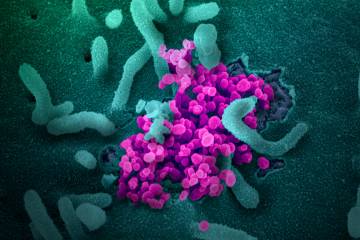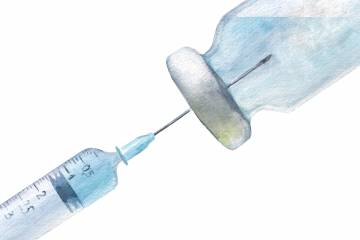Coronavirus cases are trending up in a number of states, forecasting a fall surge that could push hospitals to capacity and deplete already scarce supplies. Experts worry that hospital systems in hard-hit areas may not be ready.
Managing the number of beds, staff, and personal protective equipment needed is especially challenging when the demand could change virtually overnight, as it did in March. Lessons from the spring can help hospitals avoid an even worse fall surge, says data scientist Kimia Ghobadi, a professor in the Department of Civil and Systems Engineering at Johns Hopkins University and a member of the Malone Center for Engineering in Healthcare.
Using data from hospital systems around the country, Ghobadi and her colleagues have developed mathematical models that determine optimal resource allocation for pandemic response.
One strategy that will help large medical systems like Johns Hopkins prepare for the next surge is to balance patient loads across hospitals so that no single facility becomes overwhelmed. For example, a patient may need to be transferred from a community hospital to a larger hospital because the larger facility has twice as many beds available that day. Transfers also help hospitals allocate scarce ICU resources for patients with severe cases of COVID-19.
"Resources will go to waste if every hospital is just preparing for their own worst-case scenario," Ghobadi says. "Instead, we should look at this from a systems perspective. If we pool resources together, we can balance capacity and reduce the impact on individual hospitals, which can lead to better patient care."
Backed by a grant from the U.S. Centers for Disease Control and Prevention, Ghobadi and researchers from the Center for Data Science and Emergency Medicine are applying mathematical models to optimally transfer patients within the Johns Hopkins Health System, which includes five hospitals in Maryland and Washington, D.C. The models analyze both clinical and operational data to best manage capacity and identify patients who are candidates to be transferred to another facility.
Automating this "load-balancing" process will benefit both busy providers and patients, Ghobadi believes.
"Hospital transfers often happen when there is already some care given," Ghobadi says. "That is not always efficient, because in some ways you must start over. What does this patient need, and what resources do we have available for their hospitalization duration? We want to give providers a support tool that will help them decide where the patient can get the best care from the beginning."
The model is publicly available for healthcare managers and other researchers to examine various strategies for patient transfers, or they can request that Ghobadi's team run the models with their data.
In addition to using data to optimize patient transfers, Ghobadi is collaborating with Cassandra Thiel, an assistant professor at the NYU Grossman School of Medicine, to study how the COVID-19 pandemic disrupted PPE supply chains in New York City and other areas with large outbreaks around the country. Understanding what happened is difficult due to a lack of data; prior to the pandemic, many hospitals were not closely tracking their inventory or usage. As demand skyrocketed, supplies plummeted and supply chains were broke. In the early days, some hospitals had to contact tens of new suppliers just to find one PPE product and meet the demand that had increased by up to 60 times compared to the pre-pandemic times, Ghobadi says.
Using funding from an National Science Foundation RAPID award, the pair hopes the multi-institutional effort will prevent supply shortages from occurring during future surges. The data gathered during this research will also allow for deeper analysis of supply trends. Their goal is to eventually create a framework to inform best practices for how hospitals should buy and use PPE supplies.
While both projects were motivated by COVID-19, Ghobadi believes that this research will transcend the pandemic. For example, most PPE is single-use and is not biodegradable, so keeping a better tab on how much hospitals are using will benefit the environment and increase the sustainability of our healthcare systems.
"Our findings can help hospitals create long-term plans and make the best operational decisions even in the most uncertain times," Ghobadi says. "Hospitals can learn from the past and be more proactive in the future to avoid catastrophes."
Posted in Health, Science+Technology











